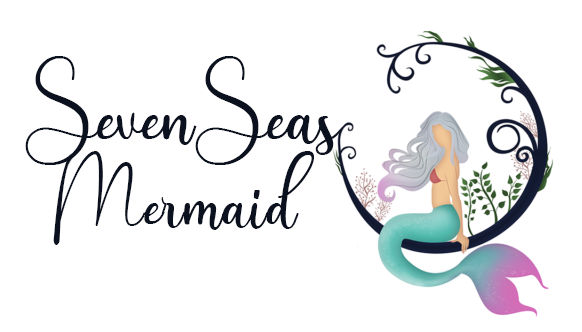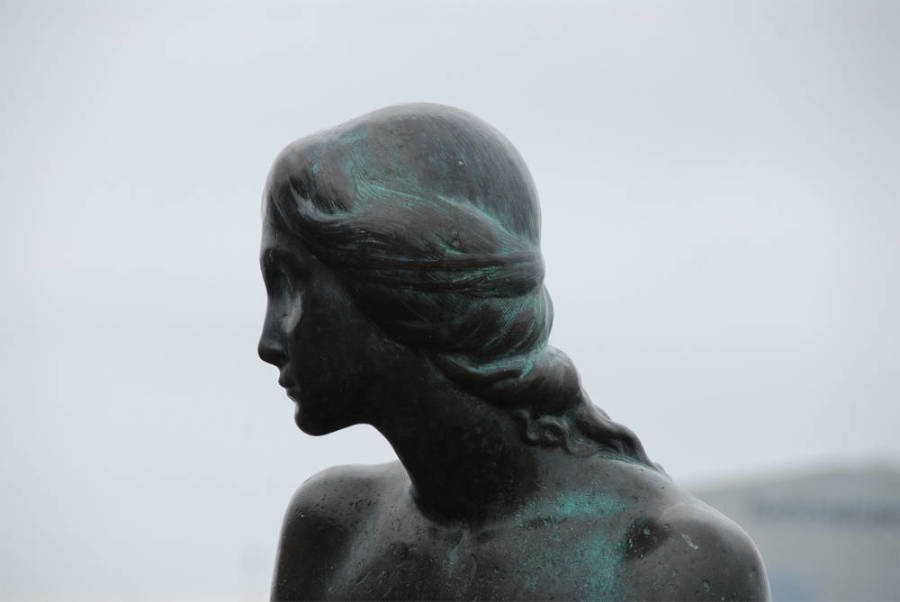While searching for information about The Little Mermaid in Copenhagen, I was surprised to read some opinions online about why it wouldn’t be worth watching. This naturally interested me and I set out to find out exactly why.
This article is not meant to discourage anyone from going to see Copenhagen’s landmark, but to show possible reasons against a visit, while learning more about the Little Mermaid and her city. Whether the reasons are justified is probably ultimately subjective.
1. Reason: The “garbage” backdrop
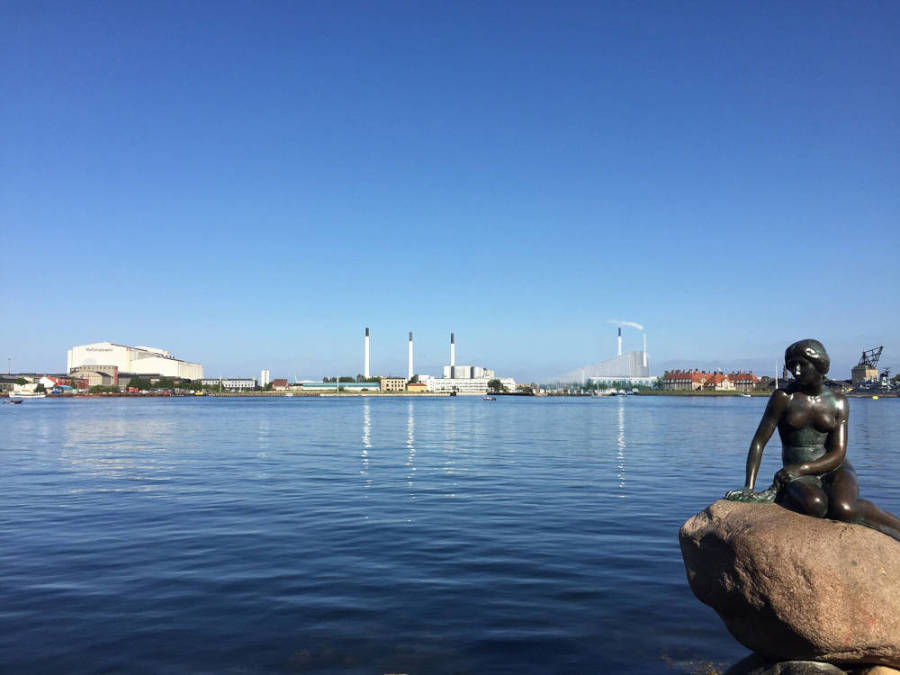
The Little Mermaid has been in Copenhagen on the Langelinie waterfront since 1913. There, the small bronze statue sits on a stone at the entrance to the harbor, its gaze dreamily directed toward the sea. If you let your gaze wander, you will immediately notice the buildings in the background, most of which date back to the industrial era of the harbor.
The white buildings behind the mermaid do not look particularly beautiful in photos, but it is a harbor. But one building stands out in particular. A triangular building with two large chimneys from which smoke rises.
It is a waste incinerator called Amager Bakke, which was built in 2017 in the harbor. But who comes up with the idea to build such a dirty plant directly behind the Little Mermaid and thus not only spoil the photo scenery, but also pollute the air?
The little mermaid and the sustainable skiers
In fact, it is not as it seems, because the plant does not pollute the air at all. Copenhagen is trying hard to be a sustainable, green city and has therefore decided to build a state-of-the-art plant that is so clean that you can even walk on it without any problems.
The plant converts the waste into heat and electricity, which can supply approximately 160,000 households with district heating and 62,000 with electricity. State-of-the-art filtration equipment is used to prevent soot and nitrogen oxides from combustion from polluting the air.
To make this concept possible, however, the facility had to be very centrally located so that households could be reached by the shortest route. The harbor turned out to be the ideal location.
The crazy thing is that on the roof of the incinerator there are four integrated ski slopes, and all without snow. There are also, among other things, a couple of the world’s highest climbing walls on the outside of the building, as well as hiking trails through parklands with many different plants.
The facility is called CoppenHill and is, so to speak, a mountain for leisure activities and one of the highest vantage points in otherwise flat Denmark.
The idea behind it was to offer a greener alternative to the ski-mad Danes who otherwise have to travel to other countries for their skiing vacations. And this alternative is green in the truest sense of the word, because instead of artificial snow, there are green plastic mats on the slopes.
Conclusion on the garbage scenery
I think if you know the background, you almost have to say that this plant is a great addition to the photos of the little mermaid.
After all, the fact that Copenhagen is one of the greenest cities in Europe and even combines the fun of visitors with sustainability would certainly have pleased the little mermaid and the other sea creatures who have to worry about the pollution of the seas these days.
Copenhagen has even set itself the goal of becoming the world’s first climate-neutral capital by 2025. Therefore, I am very positively surprised by this point and can well imagine to look at the whole once myself.
Who disturbs the scenery on the photo but something, it should be said that there are many other possible angles from which you can photograph the mermaid and make unique photos.
2. Reason: She might be missing a body part
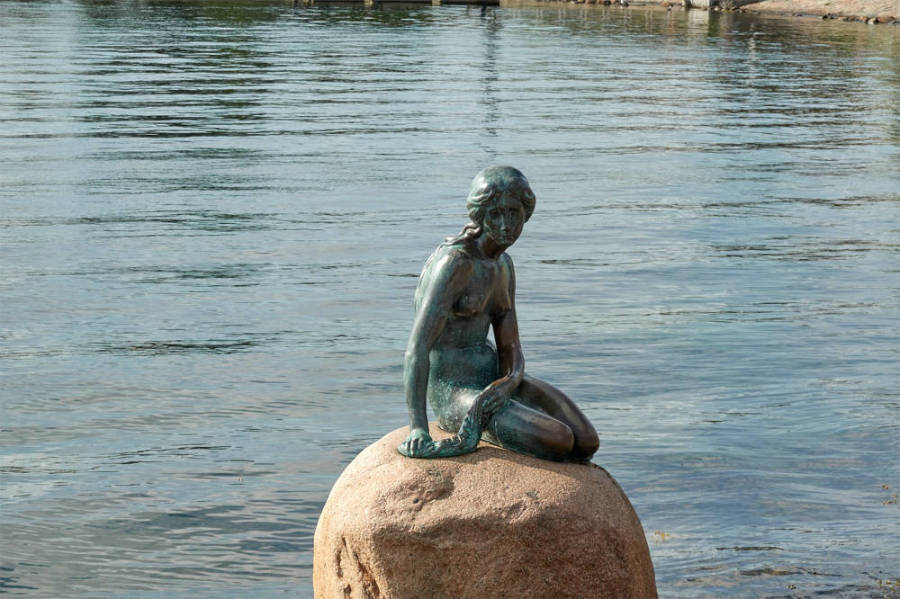
This is no joke either. Because the little mermaid lives dangerously because of her fame.
From the beginning quarrel about her body
When the Copenhagen brewer and art lover Carl Jacobsen approached the sculptor Edvard Eriksen in 1910 to have him make a sculpture of the Little Mermaid, the first disputes about the Little Mermaid arose.
The art lover had previously seen a ballet performance of Andersen’s fairy tale and was so fascinated by it that he commissioned a mermaid sculpture based on the ballerina. But the artist wanted to depict the mermaid without the fish tail, that is, after her transformation into a human being, while the client insisted on the tail.
In the end, the two came to the agreement that the little mermaid would be shown during her transformation, that is, with legs but small fins instead of feet.
How she got her appearance was also somewhat unusual. The Little Mermaid is a mixture of two different women: Ballerina Ellen Prince de Plane, who played the Little Mermaid in a ballet version of Hans Christian’s Andersen’s fairy tale at the Royal Theater in Copenhagen, sat model for the face.
The rest of the body is said to have been modeled by the artist’s wife, as the ballerina did not want to show herself naked in public.
The Little Mermaid and the dangers of her fame
After the statue was completed, it became increasingly popular and quickly became a landmark of the city of Copenhagen. But with the fame also came the attacks: The Little Mermaid has been the victim of vandalism quite a few times.
Clothes have been put on her, she has been doused with paint and painted several times, one of her arms has been sawn off and she has been decapitated twice. In 2003 she was even blown off her rock so that she landed in the water.
Much of it was intended as a political message, because the little mermaid is world famous and makes it into millions of photos every year. For example, in 2017 red paint was dumped on her to get Denmark to defend the whales of the Faroe Islands, which belong to Denmark and off which whales are still traditionally killed.
Most recently, in January 2020, the political message “Free HongKong” was written on the mermaid’s stone.
These are certainly important issues, but in Copenhagen, the attacks on the Little Mermaid are seen first and foremost as vandalism. When something like that happens, the police arrive and cordon off everything. The photoshoot probably can not happen then.
Conclusion on missing body parts
I can understand that Copenhageners and some tourists are disappointed by such incidents, as their fame is abused for other purposes.
It must be said that there has only been one incident of vandalism every few years, so the risk of this happening when you are there is relatively small.
When you think about it, though, it’s also a bit admirable that the Little Mermaid is still sitting there after her sad story (because she embodies the mermaid from Andersen’s original fairy tale version, not the story with Disney’s happy ending) and 100 years of vandalism, delighting people every day.
3. Reason: The tourist masses
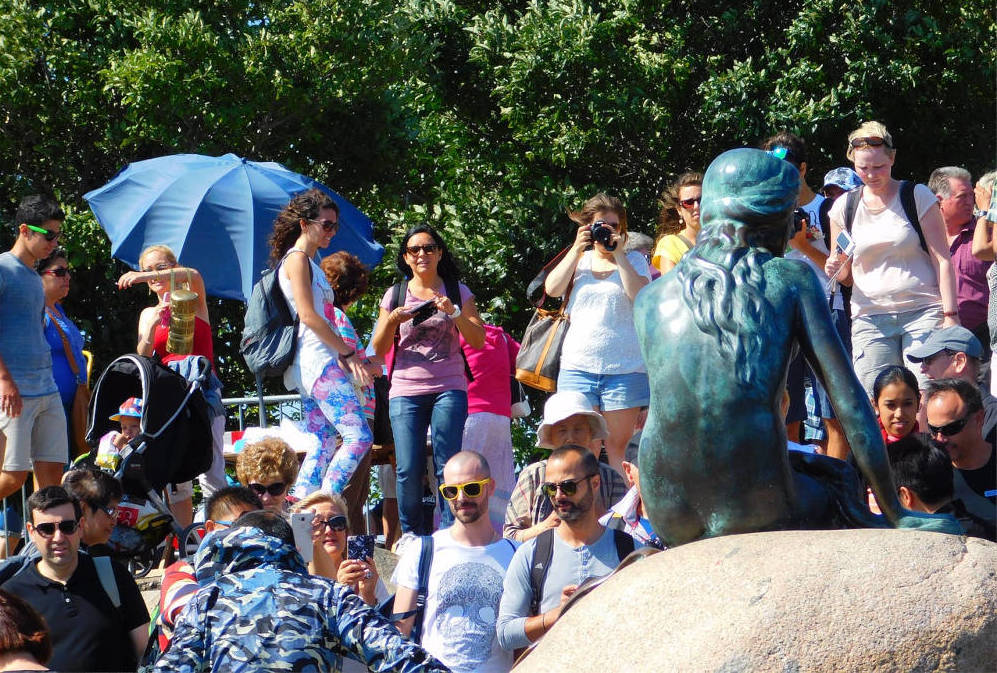
The Little Mermaid is one of the most photographed statues in the world. It is estimated that the mermaid is seen by 1 million tourists every year. That’s about 2,740 people a day!
The fact that you sometimes have to queue for a long time to take your photos and that she is very small – she is only 1.25 m tall – make some people say that the visit is a bit disappointing.
The Little Mermaid in other parts of the world
How popular the statue is also internationally, you can see, for example, how fascinated people are by it even in China. In 2010, the statue was even brought to China and exhibited there for six months at the Expo in Shanghai. Since October 2010, however, it can be found permanently in Copenhagen again.
Because the little mermaid is so famous, there are now also a few copies in other countries around the world, such as in the U.S., Romania, Spain and since 2016 in South Korea. I was lucky enough to be able to look at the statue in South Korea and can only recommend anyone who should ever find themselves in Seoul, to also pay her a visit.
Because it is located in the beautiful Yeouido Hangang Park along the Han River, which contains, among other things, some water installations. To get to the little sister of the mermaid you have to walk over a few steps in shallow water. And crowds of tourists who wanted to get to her, there were actually not there either 😉
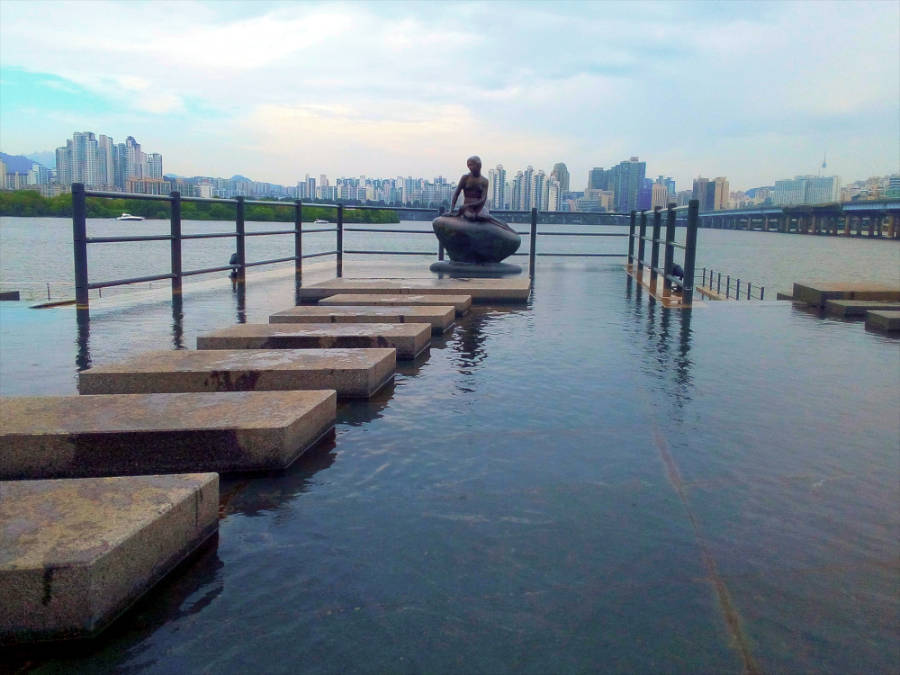
Conclusion about the tourist crowds
But even in Copenhagen, the Little Mermaid is worth seeing, in my opinion, even despite the large crowds of tourists. Because she is and remains one of the most iconic landmarks in Europe and ultimately still reminds us of the fairy tale by Danish poet Hans Christian Andersen, published in 1837, which so many people love in the original and in its numerous versions.
Is it worth it going to see the Little Mermaid in Copenhagen?
So, to sum up, all three criticisms that are brought up when it comes to whether it’s worth going to see The Little Mermaid in Copenhagen are not particularly serious, or are even actually interesting aspects of its story.
I will therefore still have a look at it once I find myself in Copenhagen.If you have already been there, feel free to let me know how you felt about it. Were you more disappointed or impressed?
Apart from that, Copenhagen is a very beautiful, environmentally conscious city that is great to explore by bike, for example, and offers a lot of culture and nature to relax in, as well as some other statues worth seeing.
